In recent years Paris auction houseArtcurial has risen to elite status in many auction genres and likethe other globally-recognized auctioneers such as Bonhams,Christies and Sothebys, the biggest players all auction something extraordinary from time-to-time.
Last week Artcurial held its D-Day Sale where the entire contents of the Normandy Tank Museum went under the hammer. It was a truly extraordinary event. Numerous world price records were broken and the perspective of the military collectibles market was slightly shaken at the values achieved. The sale fetched a total of €3,714,675 (US$4.14 million), which was much more than the top estimates of all the lots combined. That's very hard to do without a voracious marketplace, so the rise of the military collectible as an alternative wealth creation asset class is now infecting yet another auction genre.
Not surprisingly, tanks filled the top six most expensive lots sold, with three motorcycles setting world record prices too. Eighty years ago is just a fleeting moment in history, but the exhibits sold in the D-Day auction show military technology in a state of transition, emerging from small scale lethality to weapons of fearsome destructive capability.
Here's a look back at that historic day and the technology that facilitated it.
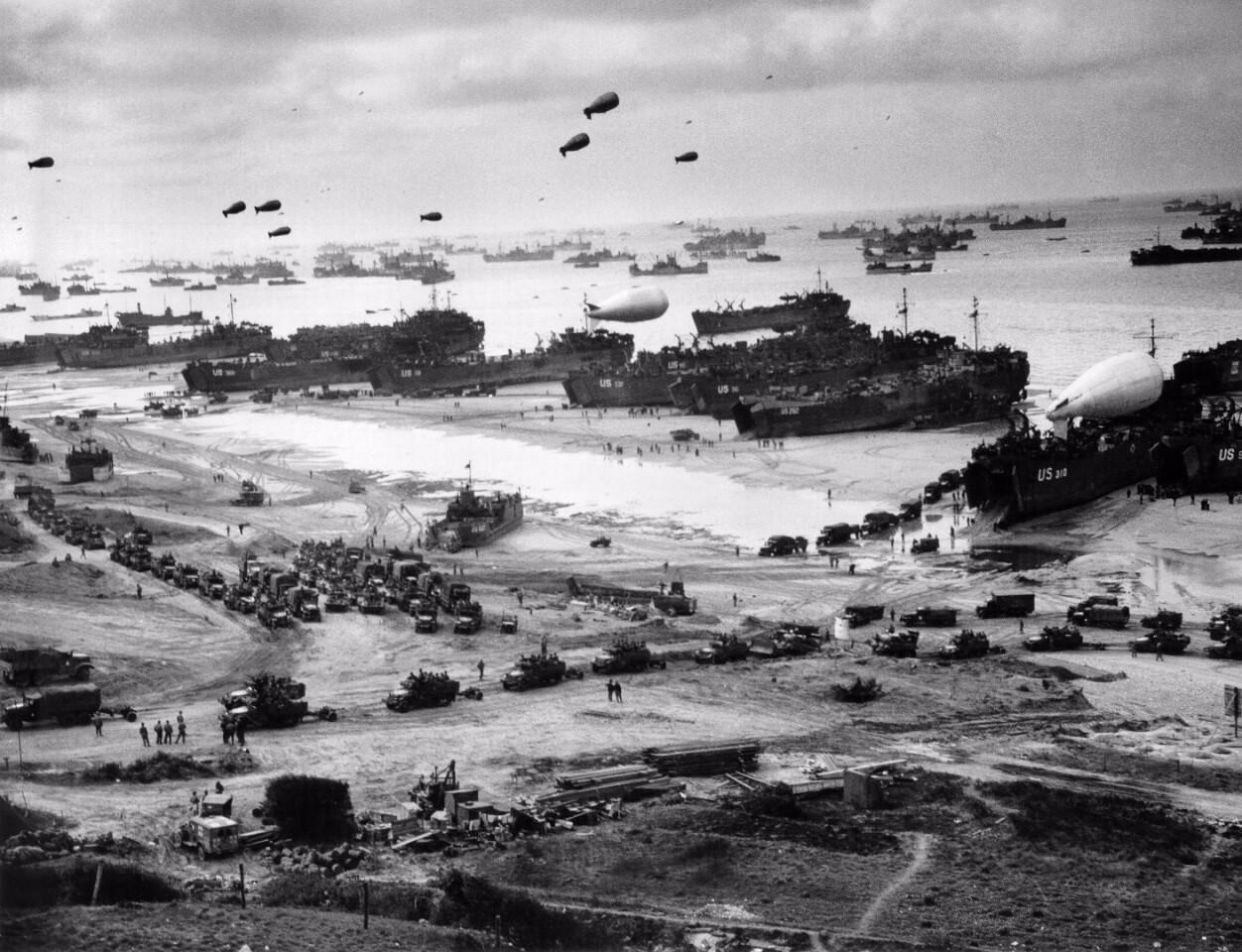
D-Day and the best known battle in the first modern war
There is no second place in warfare. The imperative of winning a war is that losing is too awful to contemplate. Germany and its people ultimately suffered humiliation, deprivation and reparation twice. It's why new warfare technologies that offer a potential competitive advantage have always been funded and why mankind's technological progress has historically been driven by military R&D.
June 6, 1944 was the day the allied armies of GreatBritain, the United States, Canada, Australia, Belgium,Czechoslovakia,Denmark, Free France, Greece, Netherlands, New Zealand, Norway and Poland invaded France to displace the occupying German army.
This was the day the best-known battle in history commenced, marking the beginning of Operation Overlord, the final phase of hostilities in theEuropean theatre during WWII.
Artcurial's D-Day sale saw the entire contentsof the Normandy Tank Museum up for auction. The museum is situated just a short walk from the Normandy beacheswhere the offensive team of 156,000 allied soldiers was pittedagainst a well-prepared defense of 50,000 German troops, with both sides having the greatest array of firepower ever assembled to thattime.
In addition to heavy fortifications, the incumbents were well prepared with 170 massive coastal artillery cannons, an arsenal of smaller guns from 100mm to210mm, plus 320mm rocket launchers.
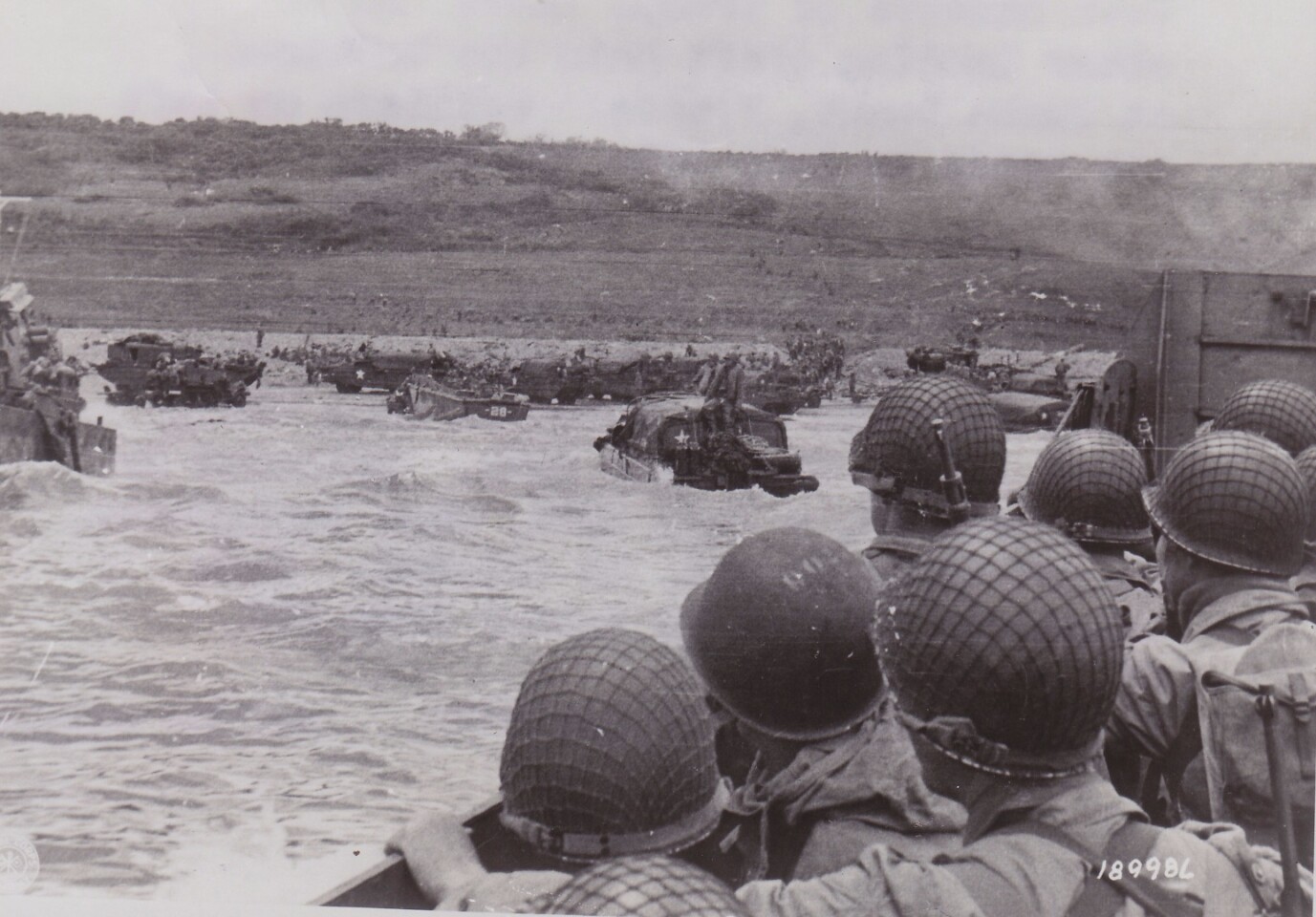
The invaders had to develop technologies and strategies to breach the fortifications just as their siege-breaker forebears had done for thousands of years. Sieges are awful affairs and they consume humans at an alarming rate. The finest minds have always been applied to solving military problems and the catapults, trebuchets and siege machines that had breached castle walls for millennia, and this was the first war fought with mature twentieth century technologies. World War I was horrific, but a quarter century of rampant technological progress had taken warfare to a whole new level.
Beyond the formidable initial obstacle of overwhelming such a heavily fortified and entrenched incumbent, the hope was that the Allied armies could then roll onwards into a Europe Germany could not adequately defend. At peak strength the German Army during WWII topped 10 million soldiers, most of which were locked in a battle of attrition with the Russians on the Eastern front at the time of the D-Day landings. Both objectives (go through the defense, then go for the goal) were achieved by the Allied Forces, which fought through the Normandy lines, then swept onwards across Europe towards Berlin. Once the Russians had turned the German Army, which got within sight of the Kremlin, the Eastern Front and Western Front raced to take control of the German Capital City. There is no greater prize than the spoils of war.
The offensive team on D-Day mustered 3,000 landing craft, 2,500 ships, and 500 naval vessels to deliver troops across the narrow English Channel to the battle.
If you have trouble imagining the horrors faced that day, watch the beginning of the feature film Saving Private Ryan. The beaches were covered with barbed wire, trenches, sharpened stakes and vast tracts of anti-personnel mines ... anything the human mind could contrive to kill, stop or slow an invading army. Fatalities on the first day of the battle approached 5,000 souls on each side. The opening sequences of Saving Private Ryan are available on YouTube and are regarded by many as director Steven Spielberg's finest ever movie scene, realistically portraying American troops storming Omaha Beach (one of the five D-Day target beaches). Beware – it's not for the feint of heart.

The aim of the allies was to overwhelm the defense in five places along a 50 mile stretch of coastline, create beachheads on all five beaches, then link those beaches over hours or days – an objective that was achieved two weeks later.
The initial assault had many phases including an initial aerial bombardment of the defenses plus another 800+ aircraft which dropped troops and supplies by parachute and gliders behind the initial lines so they could attack the defenders from both sides as well as disrupt the supply routes and infrastructure established to sustain the defense.
The museum-quality lots on offer atArtcurial's D-Day sale were the tanks, mobile weapon systems, trucks, staff cars, aircraft, motorcycles, uniforms, andtools of both sides – every aspect of perhaps the most important singlemilitary confrontation in history.
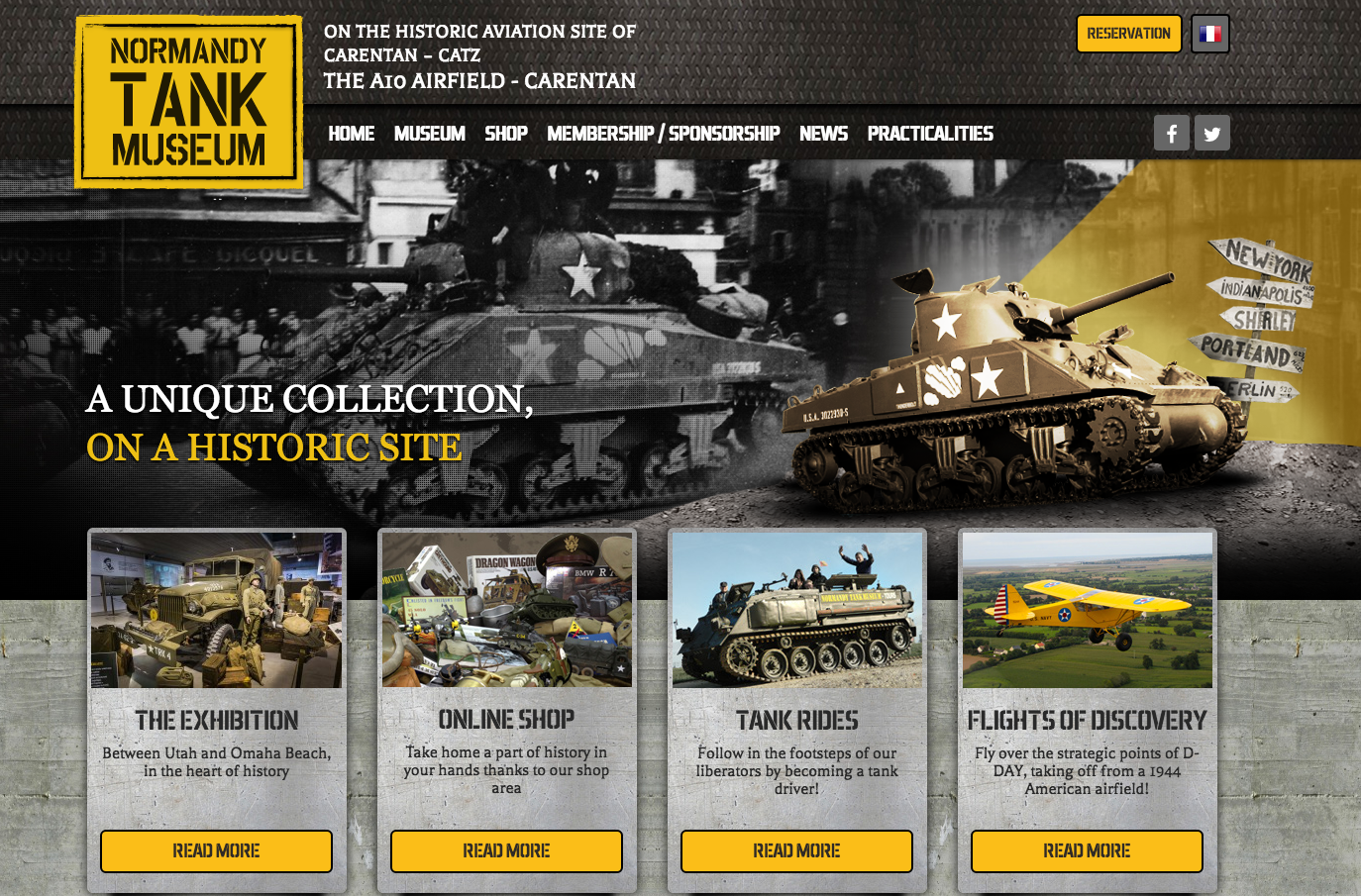
That a museum such as the NormandyTank Museum could be broken up is tragic, as it provided a clearsnapshot of most of the technologies employed by both sides in a momentous event ... and it went out of businessbecause not enough people were interested. There are many other fine museums in the area covering similar subjects and commercialreality meant that all exhibits of the Normandy TankMuseum were sold. Look at the screen capture from above and you'll see that the museum offered tank rides - everything sold was authentic to the bone, and in as-new working order other than the weapon systems.
WWIIwas the first major motorized conflict in history, so although manyof the tools look agricultural in comparison to the latest militarytechnology, the seeds of many of today's tools of war, much less the cars and motorcycles we covet, can be seen inthese lots.

Most of the equipment sold was state-of-the-art military technology 80 years-ago, the sort of technological wizardrythat might be issued at a pre-mission briefing by Q Branch to a WWII James Bond, with my favorite beingthe game-changing Cushman M53-A motorcycle – a miniaturetwo-wheeler specifically built to be delivered by glider or parachutebehind enemy lines, and to enable American marines to cause mayhem in a much larger footprint, with 40 mphmobility and a range of 100 miles.
The game-changing parachute

The parachute was first envisioned in Italy during the 1470s by an unknown author (above left), then byLeonardo Da Vinci circa 1485 in Codex Atlanticus (1478 - 1519). That's Leonardo's sketch in the center of the image above, with his famous mirror-image writing in the notes. The first successful (i.e. non-lethal) high altitudeparachute jump was performed by André-Jacques Garnerin in Paris in1797 from a hot-air balloon using a smaller basket to enclose himself (above right).
Once the Wright Brothers had proven heavier-than-air flight was possible in 1909, the aviation industry materialized quickly and rampant innovation produced increasingly safer, faster, and more reliable aircraft. Despite rapid technological development on many fronts in the dynamic new aviation industry, parachutes were still a work-in-progress at the time of the first global conflict (1914-1918), with roughly one third of parachute jumps during WWI resulting in death.

By WWII, parachute technology had matured to mainstream status and a well-trained human could safely jump from an aircraft in flight ... then fight. This was a game-changer. The parachute transformed ground warfare as it could put elite soldiers anywhere and this became one of the cornerstones of the battle plan for Operation Overlord: to airdrop large numbers of of skilled combatants not just behind enemy lines, but to destroy strategic targets across France and disrupt the defense supply lines.
Soldiers on foot have a very limited range, so increased mobility became a force multiplier. As the inevitability of an invasion of Europe became clear, the British and American Governments asked many motorcycle manufacturers to produce a lightweight motorcycle capable of being airdropped into the battlespace.

The most common of these airborne motorcycles became the Royal Enfield Flying Flea. This ultra-lightweight 125cc two-stroke (top row in above image) was capable of 130 mpg economy and had a top speed of 45 mph. 7000 of the bikes were manufactured, then fitted into tubular steel cradles capable of withstanding a parachute landing (centre and top right).
In terms of quantity, the Cushman 53-A was the second most prolific paratrooper motorcycle in the European theatre with roughly 4500 units built, and the British folding Welbike, with 3,500 units, was third. That's the Welbike at bottom left in the above image, being assembled by British Commandos on the battlefield from an airdropped cylinder.
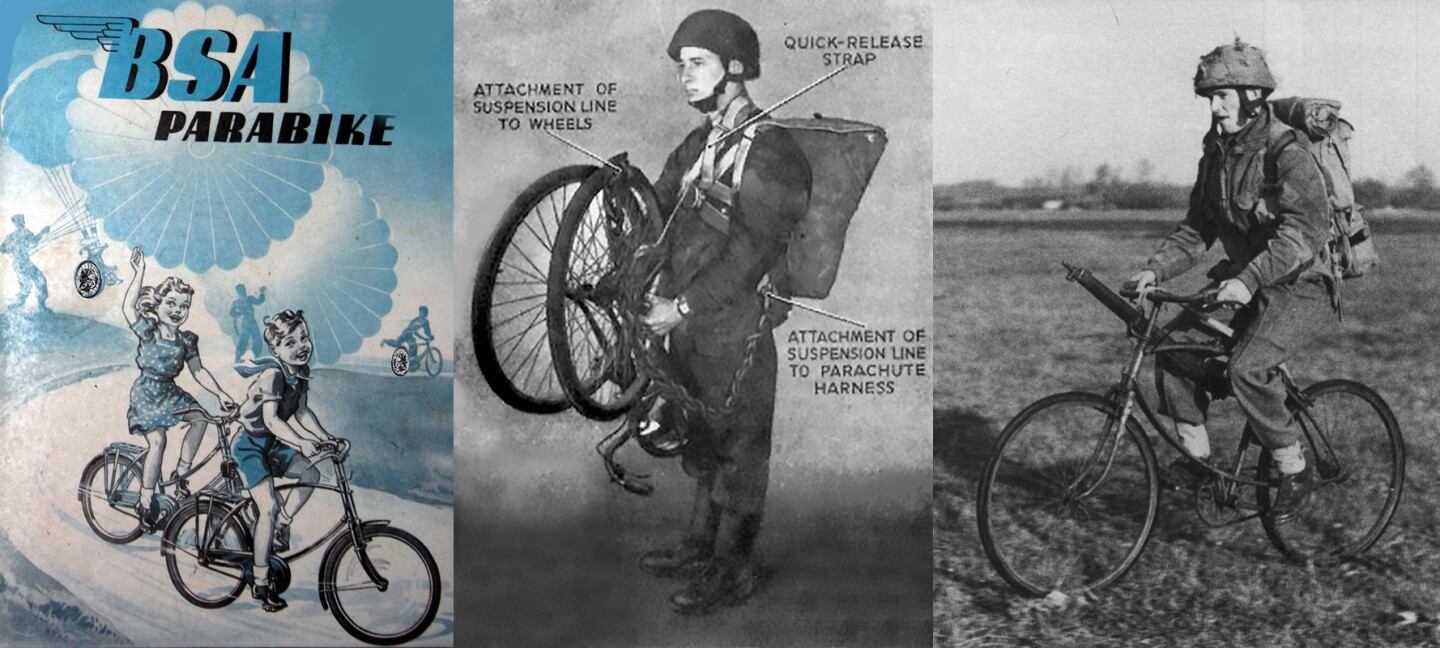
Most of Britain's motorcycle manufacturers built specific military models for different military purposes. Birmingham Small Arms (BSA) was the country's biggest and most advanced manufacturer of both firearms such as the Browning Machine gun, and motorcycles such as the BSA 500cc M20 single, which was the motorcycle of choice of the British military. BSA's solution was both simple and ingenious, but it wasn't a motorcycle, it was a low-cost, lightweight folding bicycle which the commando could carry, jump and land with, and be immediately mobile. Around 70,000 units were produced during the war.
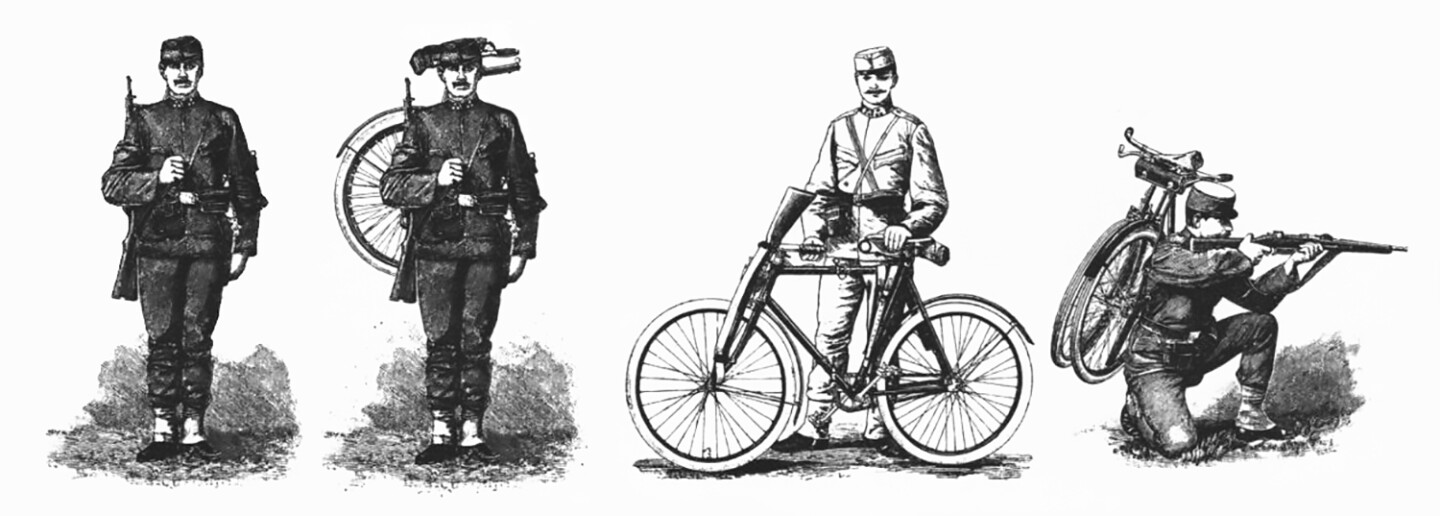
Whilst the 20th century can rightly be called the century of the automobile, the bicycle outsold the automobile almost every year for the entire 100-year period due to its ease of manufacture, low price, and the utility it offered. For the same reasons, it played a major role on the battlefield from the late 19th century right through until recently. It doubled the carrying capacity of a soldier across country, and quadrupled the speed at which they could travel in some circumstances.
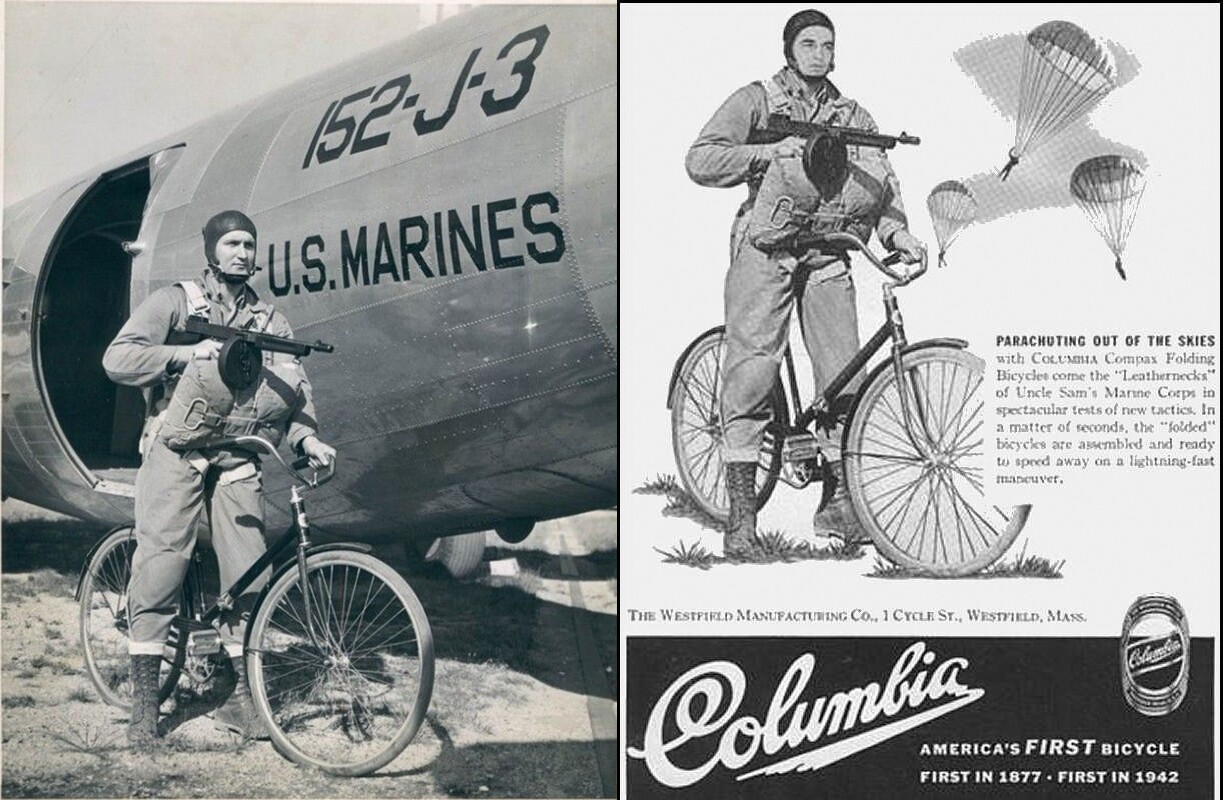
In America, similar tenders were sought and the Columbia bicycle moved far more marines than the Cushman ever did, building a brand with reliability and mission critical as its underpinning values. Indeed, whilst the D-Day sale offered the finest specimens of the iconic "Q Branch" armaments, uniforms and mobility, the vast majority of grunts were issued far less exciting tools for the job, and the bicycle was one of the key military technologies of WWII.
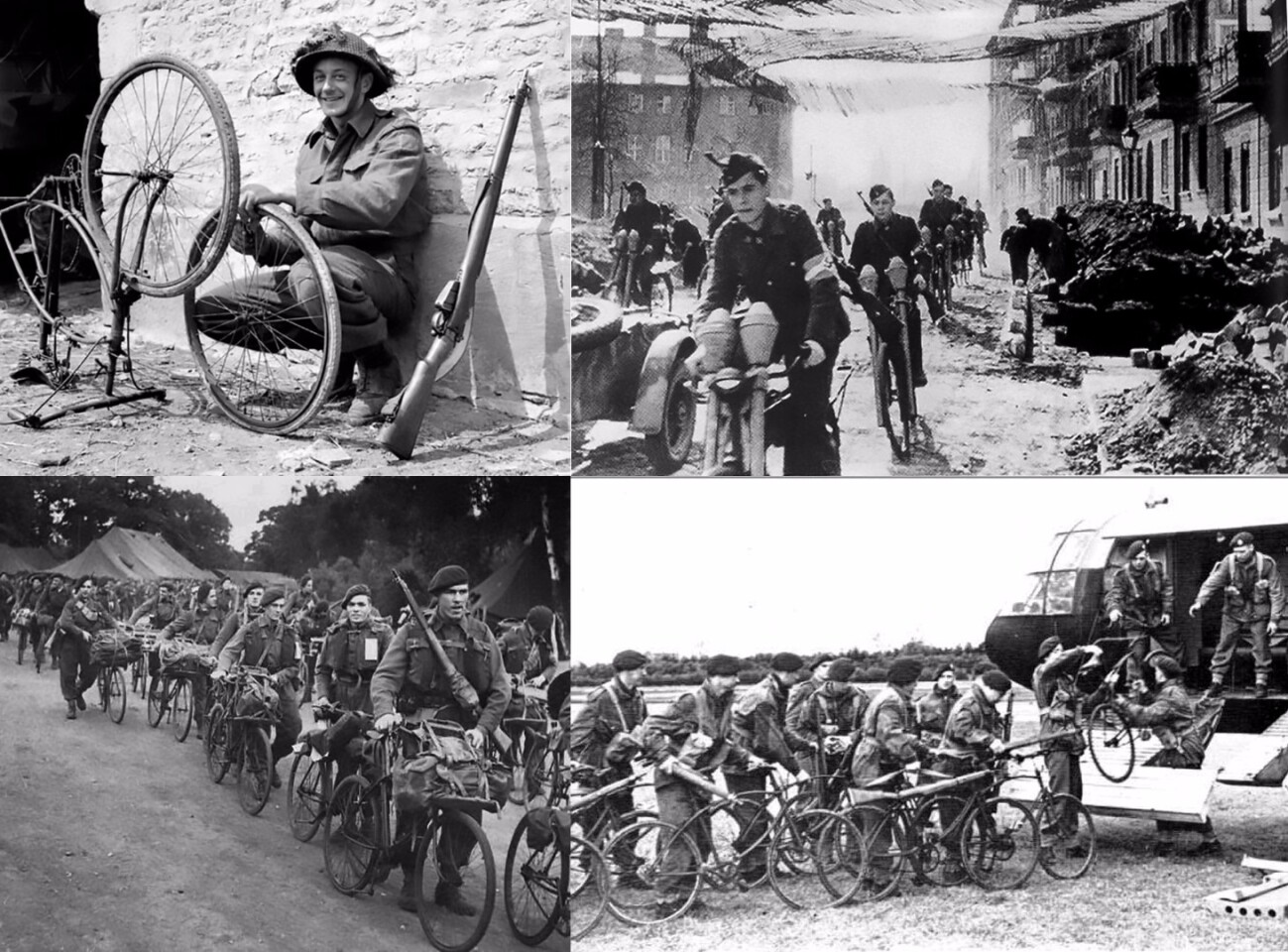
The misconceptions surrounding WWII are too many to list, and the truth of the fighting tools issued during the war is that in the main, they were even more mundane than the bicycle. Though there were many motorized fighting divisions on both sides during WWII, the vast majority of artillery and supplies were horse drawn in the European theatre. The fallacy that WWII was a totally motorized war has no doubt been perpetuated by film and television shows depicting the epic events of WWII using iconic motorized transport. It makes for better entertainment if the hero rides a Harley-Davidson instead of a bicycle. The reality was that horses were even more commonplace in WWII than bicycles.
Many of our readers will have been subjected to the British or American propaganda data-set and its focus on the Western Front has completely overlooked the fact that most German soldiers died on the Eastern Front fighting Russia. Germany lost 4,000,000 soldiers and 1,500,000 horses on the Eastern (Russian) front, indicating the extent to which the German military relied on horse-drawn transport.
The game-changing bomb
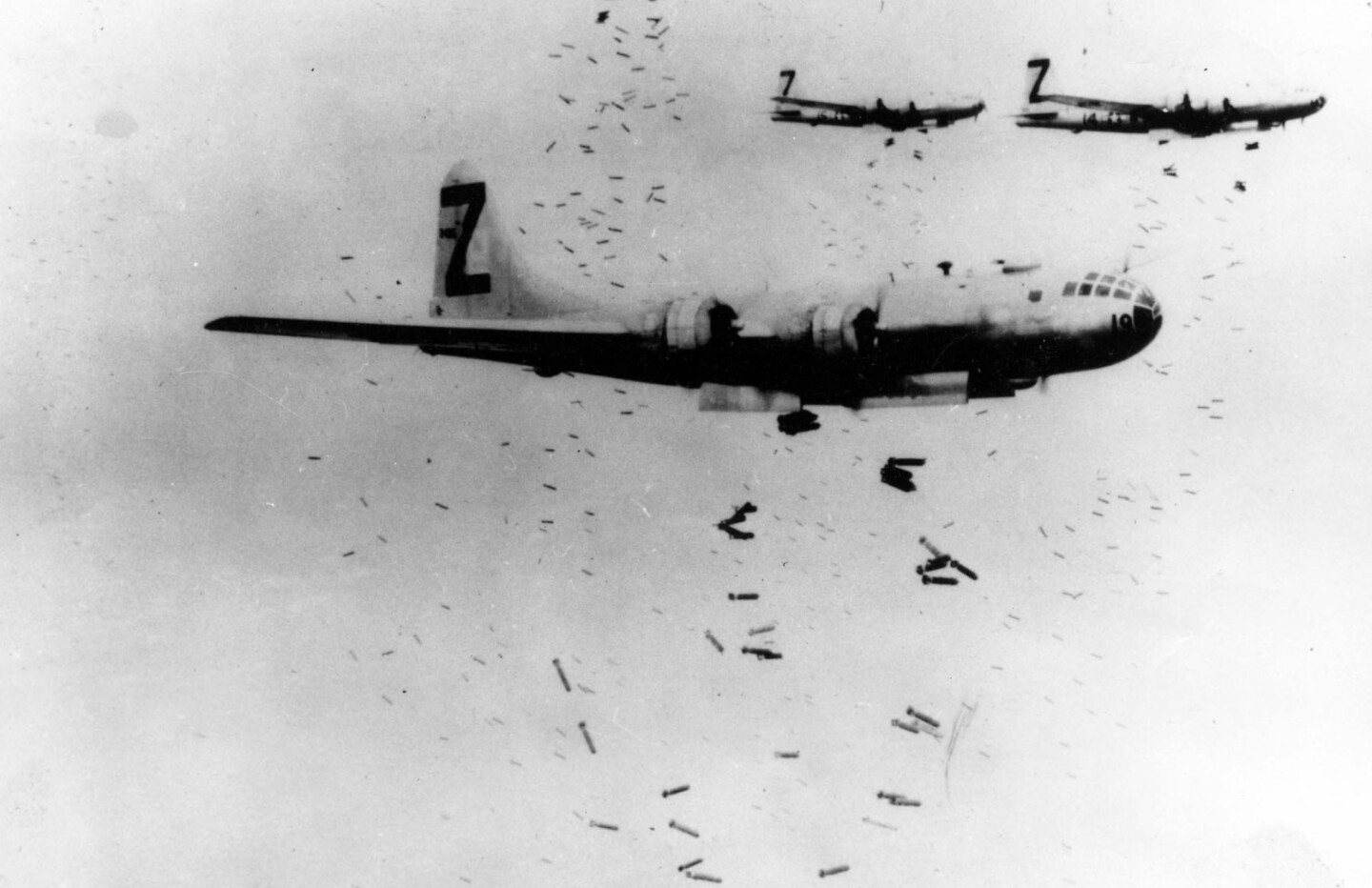
WWII began just 25 years after WWI but the march of technology had seen the bi-planes of WWI replaced by a vast array of purpose-built war planes. Initially, during WWI, aerial bombing began as hand-grenade type bombs which the pilot quite literally threw at the enemy below from his cockpit. By WWII, a single long-range bomber such as the Boeing B-29 Superfortress could deliver 20,000 lb (9,000 kg) of bombs, and a fleet of bombers was capable of carpet bombing vast tracts of civilization back to the Stone Age – in an evening. Both sides demonstrated this capability on civilian populations, spicing the deadly cocktail in the bomb bay with incendiary bombs to ensure that fire completed the devastation below. Only the losers get tried for war crimes.
Game-changing airpower
Whereas the fastest fighter planes of WWI could travel at an unprecedented 140 mph, most WWII fighters could now close on an target at four times that speed with an array of weaponry ranging from bombs, to torpedos, rockets and when the big guns were expended, 50 mm machine-guns. For those unfamiliar with even 80-year-old weaponry, a 50 mm machine gun can vaporize a car in seconds. Variations of the warbird's form factor covered a vast inventory of purpose-built machinery, from reconnaissance to air-to-ground and air-to-air specialist planes, right through to last-mile disposable air transport in the form of gliders, which due to their light weight, could set down on any road.
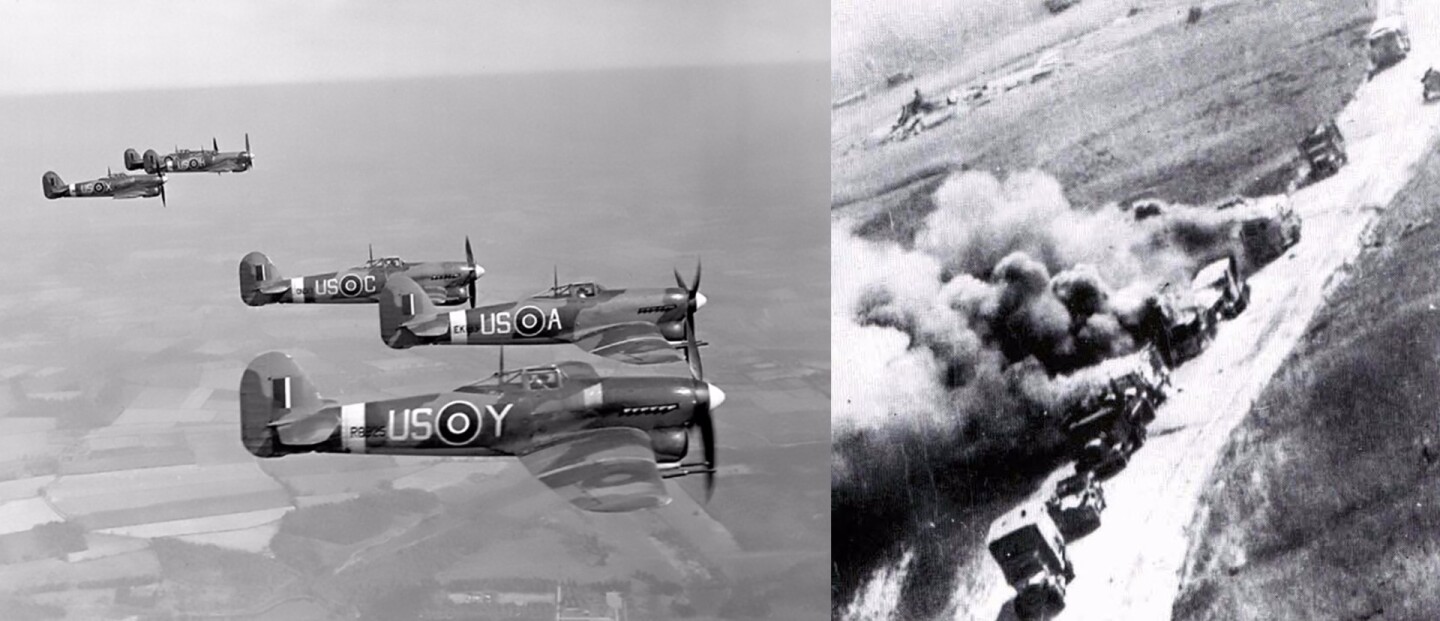
The Normandy Tank Museum is primarily about land and sea warfare, not about the crucial battle in the air, which is key to this story. English writer Herbert George (H.G.) Wells wrote many profound things ("Adapt or perish, now as ever, is nature's inexorable imperative", "If we don't end war, war will end us", "History is a race between education and catastrophe" and my favorite "Advertising is legalized lying") and was considered expert in the strategy and tactics of warfare. His summation on the importance of airpower superiority on the battlefield was written in 1902, seven years before the Wright Brothers took flight: "Once the command of the air is obtained by one of the contended armies, the war must become a conflict between a seeing host and one that is blind."

By June 1944, the Allies had complete control of the air. On D-Day the Allies flew 14,500 sorties over the battlefield, compared to the Luftwaffe's 300 sorties, and fighter-bomber attacks on German formations made movement during daylight almost impossible, disrupting supplies of food, fuel and ammunition to the defenders.
The game-changing tank
The tanks at the Normandy Tank Museum are examples of those that were fielded in this 1944 battle, but the tank's birthplace is just a few hours drive from Normandy. The tank had been conceived during WWI as a way of overcoming the stalemate trench warfare that was first seen in that encounter, and the first tank rolled onto the battlefields of the Somme on 15 September 1916 (below image).

The first lumbering fortified all-terrain vehicle (AKA "tank") could manage just 3 mph and was chronically unreliable. Of the 49 tanks committed to battle, only 32 got to the battlefield. Though France had been developing tanks prior to WWI, the arrival of those 32 tanks on the battlefield that day had a profound effect on the morale of both sides. The British troopers who had been engaged in meatgrinder trench warfare for three years reacted predictably at the arrival of a game–changing, seige–breaking machine. The troops on the opposing force felt quite differently and for Germany, which had presumed a short and decisive victory when it began the war, tank warfare had been entirely overlooked and development began immediately.

Some new technologies take longer to mature than others and the British pressed ahead, developing and improving each iteration of the game-changer in short order. It fielded 216 tanks in the Third Battle of Ypres (July, 1917) to little effect because of the impassably wet conditions, then 400 tanks in a battle in Cambrai (November 1917) where the tanks smashed through enemy lines on a 7-mile wide front. In August 1918, 600 British tanks were the deciding factor in the Battle of Amiens. Germany managed to get a tank into production in 1918 with the first tank–v–tank battle taking place on April 24, 1918 with Germany capitulating soon thereafter. General Erich Ludendorff of the German High Command stated after WWI that tanks had been the principal factor in Germany's defeat. Germany learned from its defeat and tanks were to be the country's initial trump card in WWII, pivotal in Germany's opening-move blitzkrieg tactics which used a combination of overwhelming air and tank power to break through enemy lines, then circle around and come at the defenders from the rear.
The Sherman Tank

The tanks fielded by both sides in 1944 were vastly more capable and had gained formidable firepower in comparison to the lumbering bohemoths of WWI. The prize lot at the D-Day sale was the Sherman M4A4 tank (above) which fetched €364,000 (US$406,121). Powered by a 500 hp V8 Ford engine, the Sherman M4A4 was capable of ten times the first tank's speed (30 mph) for 120 miles and sported a 75 mm M3 L/40 cannon on the turret (90 rounds on board), and a secondary 50mm Browning machine gun (300 rounds) for close combat.
The story of the D-Day sale continues in our photo library, where you'll find detailed images of the choice lots, indicating the diversity and ingenuity of the game-changing, ground-breaking technology from 75 years ago.
Here are some examples of what you'll find:
The game-changing Jeep
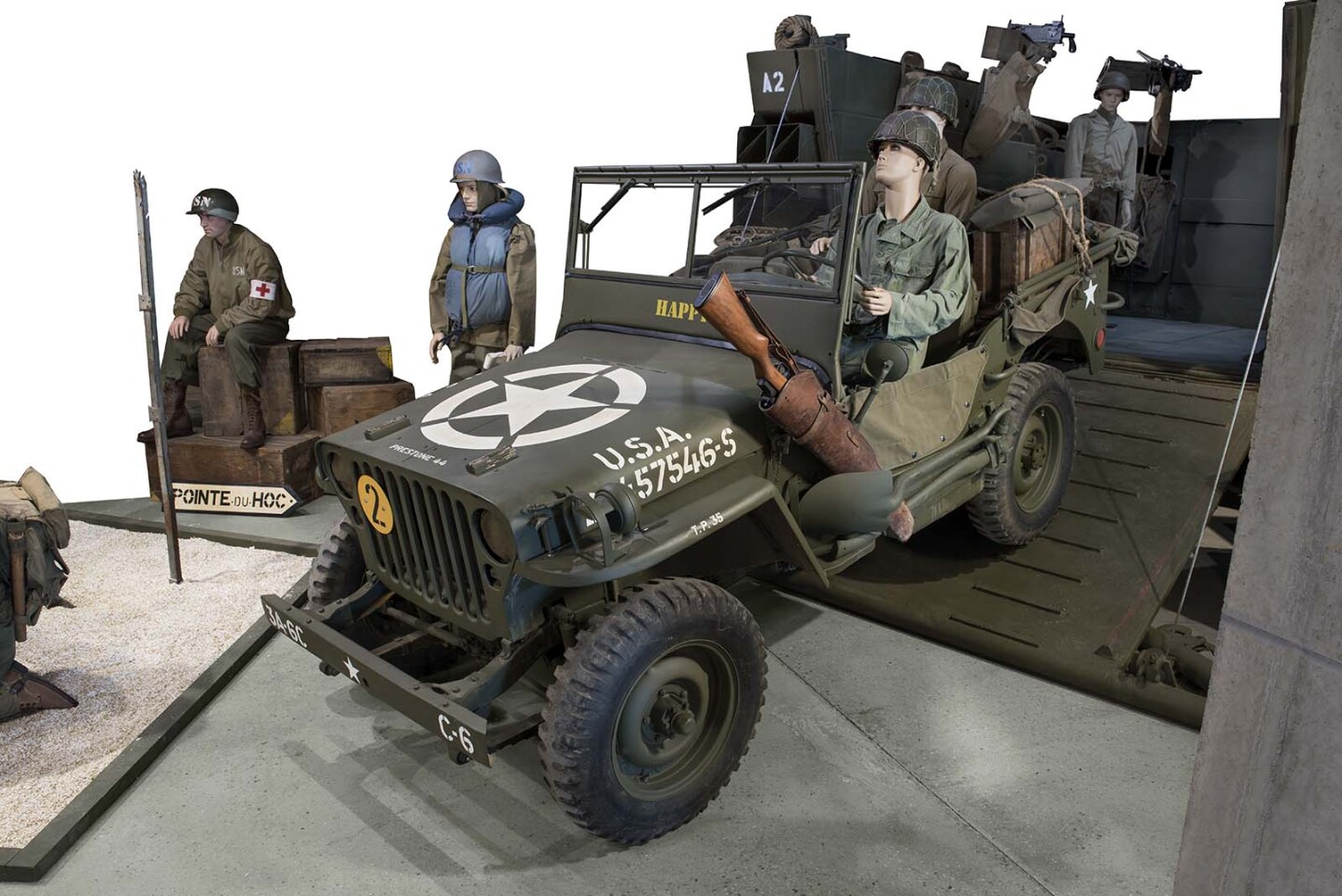
The Willys Jeep became the Allies' mechanical horse. Formally known as the U.S. Army Truck, 1/4 ton, 4x4, the Jeep was the most recognizable of a new breed of vehicle developed to go overland. It's another military technology that evolved into a global brand name and an entire new human capability. Essentially the prototype for the four-wheel drive utility vehicles we know today, 350,000 were manufactured during World War II. This Jeep is the most expensive ever sold, fetching €100,100 (US$111,683) at the D-Day sale.
The People's Automobile proves its worth
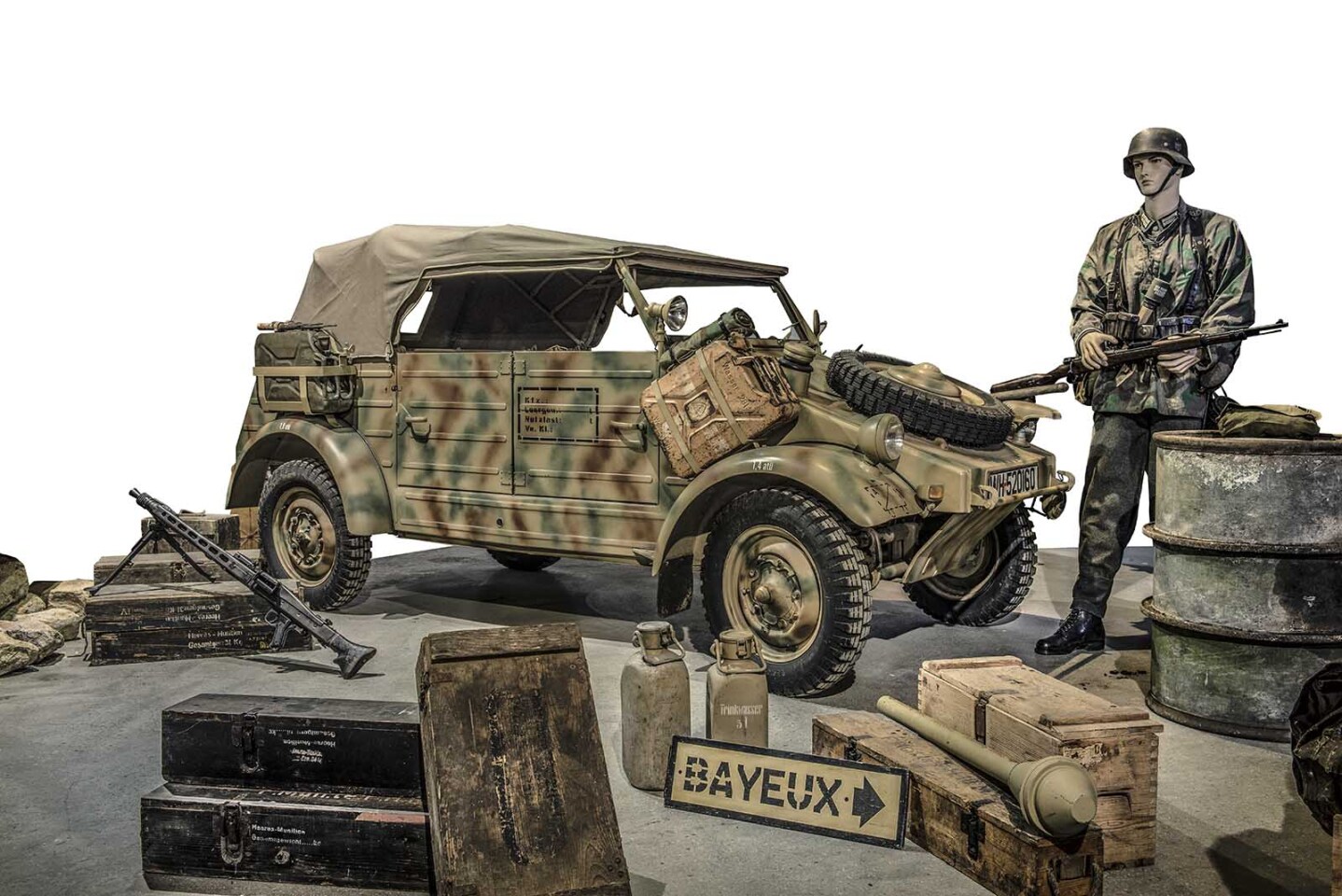
What we know now as Volkswagen got it's start in 1934 when as the Volks Wagen (People's Automobile), when Ferdinand Porsche was asked to develop an affordable car for the German people. Commercialised in 1937, Porsche had already been asked to develop a 950 kg military vehicle based on "the beetle" that would transport four people and their equipment and the Type 82 was created. Nicknamed the Kübelwagen ("tub car"), and only 2WD, it was light enough to go places heavier 4WD models could not, and earned a fine reputation in the field, with 55,000 Type 82s in service. This Kubelwagen sold for €68,200 (US$76,091) at the D-Day sale off an estimate of €25,000 to €45,000. The lessons learned in wartime about the already exceptional Porsche design in the field enabled Volkswagen to eventually build a brand around reliability and affordability which is today one of the largest automobile manufacturers in the world.
The cavalry rode Harley-Davidson's iconic V-twin

Harley-Davidson was yet another brand to reach iconic status thanks to this global conflict. The distinctive 60 degree V-twin exhaust note of Harley-Davidson's WLA military motorcycle heralded the arrival of the cavalry to every country in Western Europe and became a symbol of American values. Despite being an inferior machine in service compared to the German parallel twin BMWs (see below), the Harley brand name invisibly went global over the 14 months following D-Day and in a world where a Japanese, then Korean, then Chinese manufacturer can copy anything, Harley-Davidson's brand values cannot be replicated. This particular Harley-Davidson WLA 750cc became the new world record holder for the model at the D-Day sale, selling for €66,960 (US$74,708).
Bavarian Motor Werk hits the world stage
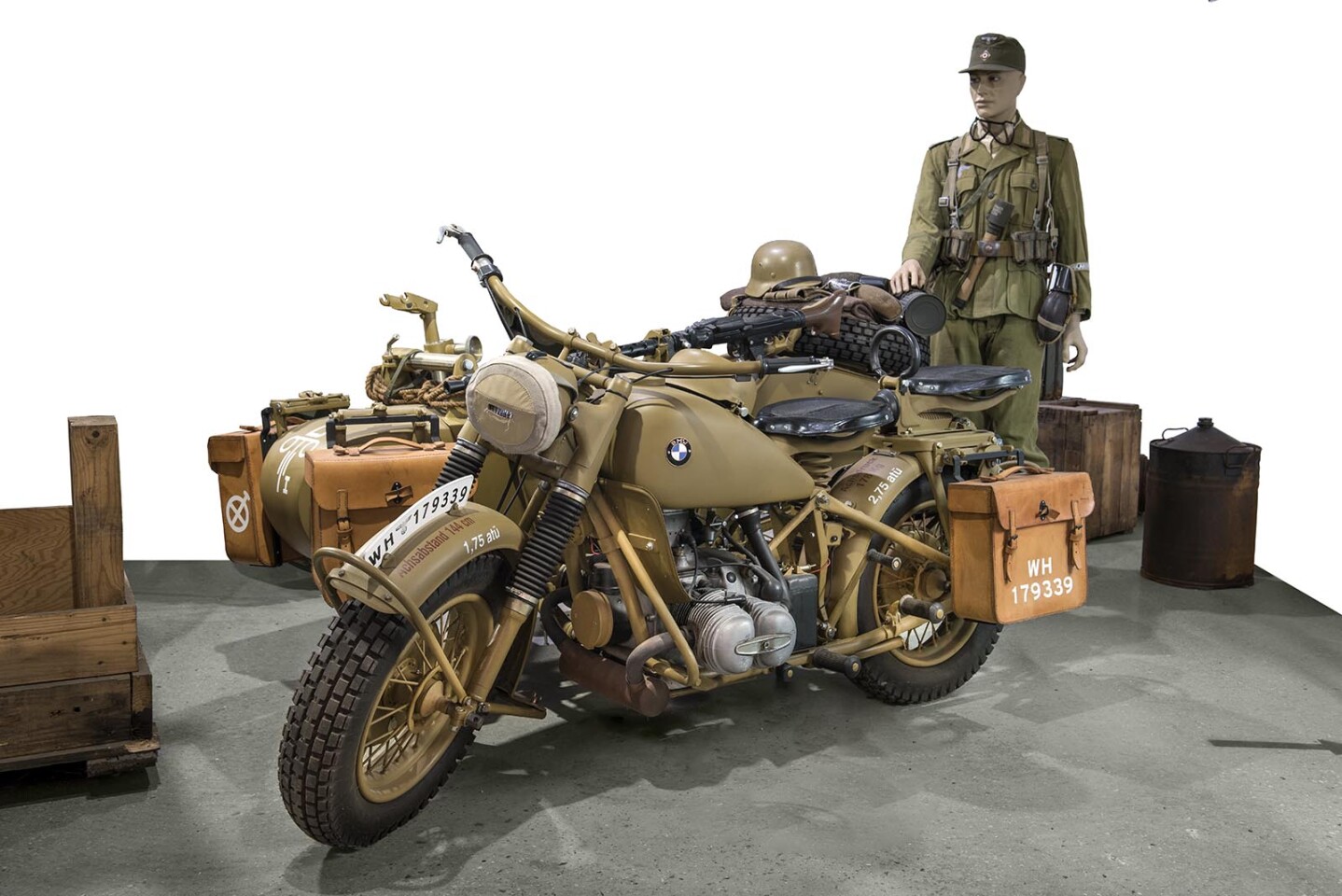
BMW's military motorcycles quickly evolved into beasts of wartime burden that were so sturdy and reliable in the field, that the American and British governments demanded their motorcycle manufacturers produce a shaft-drive parallel twin "just like that one." The best motorcycle on the battlefield in this encounter, BMW, like Volkswagen, became a global brand using the sound design and unstoppability of its wartime product as the foundation. This BMW R75 and sidecar set a new world price record for the model at €169,000 (US$188,556) and is now one of the top 100 most expensive motorcycles sold at auction.
Summary: The legacy of war
The history of humanity is a narrative of ideas, leaps in understanding and the new technologies that enable the evolution of human existence. Most technological progress happens when there is an imperative and that imperative has traditionally been war. From the moment Isaac Newton and Gottrfied Liebnitz invented calculus (the ability to mathematically describe movement), guns became increasingly accurate and Newton's laws of motion described how the world worked for all to see. Given these new tools, military technology became exponentially more fearsome.
No-one really foresaw the horrors of WWI, where two advanced nations faced off for the first time with the manufacturing capacity and military firepower flowing from the industrial revolution. The new ways enabled by the early scientific revolution were maturing into commercial realities all at once. Machine guns and other weapons of localized human destruction had been used by colonial powers to pacify the natives and beat up smaller, less advanced nations, but WWI was the first time the fearsome new weapons of war had been used by the big boys.
WWI introduced war planes, long range cannons, submarines, war ships with over-the-horizon firepower, tanks, anti-tank then anti-personnel mines, machine guns and flamethrowers. WWII saw the maturation of all of those technologies into more devastating, more accurate, more lethal instruments of destruction that could not have been imagined a generation prior.
Exactly 14 months after D-Day, the human race showed what happens in a poker game where both players keep doubling down, completing the arms race from 3 mph tanks to nuclear weapons in just 29 years spanning two world wars.
Lots more detail and images in this article's image library.















































































![The Ti EDC [everyday carry] Wrench is currently on Kickstarter](https://assets.newatlas.com/dims4/default/0ba225b/2147483647/strip/true/crop/4240x2827+0+3/resize/720x480!/quality/90/?url=http%3A%2F%2Fnewatlas-brightspot.s3.amazonaws.com%2F59%2Fb2%2F6a6fdd0348a8bfdad88bbcefec53%2Fdsc03572.jpeg)